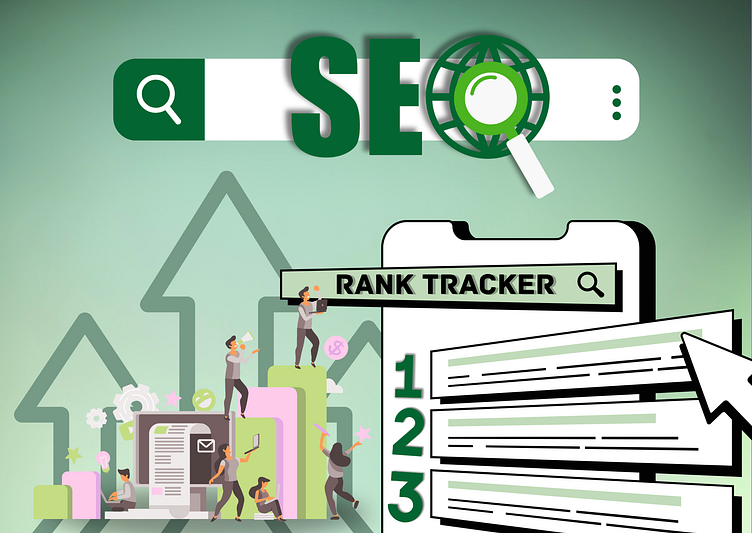Optimize SEO Articles
How to Optimize Your Articles for SEO?
Search Engine Optimization (SEO) is crucial for any online content creator who wants to increase their online visibility, drive more traffic to their website, and reach a wider audience. Optimizing your articles for SEO can help you achieve these goals. In this article, we will discuss some tips and techniques on how to optimize your articles for SEO, including the use of tools like Ranktracker.
1. Keyword Research and Planning
Keyword research is the foundation of SEO. It involves identifying the keywords and phrases your target audience uses to search for content like yours. You can use tools like Google Keyword Planner, Ahrefs, or SEMrush to find relevant keywords. Once you have identified your keywords, incorporate them into your article, but make sure to use them naturally and not stuff them. Aim for a keyword density of 1-2% to avoid penalty from search engines.
To conduct effective keyword research, follow these steps:
Identify your target audience and their search habits
Use keyword research tools to find relevant keywords
Analyze your competitors' keywords and identify gaps in the market
Create a list of primary and secondary keywords
Use keyword clustering to group related keywords
By conducting thorough keyword research, you can create content that resonates with your target audience and ranks higher in search engines.
2. Track Your Rankings
In the digital age, tracking your rankings on SEO is not just beneficial; it's essential for any online presence. Utilizing the best SEO rank tracker is crucial for maintaining and improving your visibility across search engines like Google, Bing, and Yahoo. It's the cornerstone of a robust SEO strategy, enabling you to:
• Monitor your keywords and receive timely alerts when your rankings fluctuate.
• Analyze your competitors to uncover market opportunities and refine your tactics.
• Gain insights into your content's performance and make informed decisions based on solid data.
By integrating these practices, you can fine-tune your articles for SEO, thereby enhancing your online footprint. It's important to consistently produce content that is not only high-quality and engaging but also strategically optimized. Tools like Ranktracker are invaluable for keeping tabs on your SEO journey, helping you to navigate the ever-evolving landscape of search engine algorithms and user behaviors.
3. Optimize Your Title and Meta Description
Your title and meta description are the first things that search engines and readers see. Make sure they are attention-grabbing and informative. Your title should include your main keyword and be less than 60 characters. Your meta description should be a summary of your article and include your main keyword. It should be less than 160 characters.
To optimize your title and meta description, follow these tips:
Use a descriptive and attention-grabbing title that includes your main keyword
Write a compelling meta description that summarizes your article and includes your main keyword
Use a question or statement that encourages readers to click on your article
Avoid using duplicate or missing titles and meta descriptions
Use a title and meta description that accurately reflects the content of your article
4. Use Header Tags and Subheadings
Header tags (H1, H2, H3, etc.) help search engines understand the structure of your article. Use them to break up your content into sections and highlight important points. Subheadings make your content more readable and help readers scan your article.
To use header tags and subheadings effectively, follow these tips:
Use a clear and descriptive H1 header tag that includes your main keyword
Use H2 and H3 header tags to break up your content into sections
Use subheadings to highlight important points and make your content more readable
Use header tags and subheadings consistently throughout your article
Avoid using too many header tags and subheadings, as it can make your content look spammy
By using header tags and subheadings, you can improve the readability and structure of your content, making it more appealing to readers and search engines.
5. Content Quality and Length
Content quality and length are crucial for SEO. Your content should be well-researched, informative, and engaging. Aim for a minimum of 500 words, but make sure your content is not too long or too short. Use a conversational tone and include visuals like images and videos to break up your content.
To create high-quality and engaging content, follow these tips:
Conduct thorough research and provide valuable insights and information
Use a conversational tone and avoid jargon and technical terms
Include visuals like images and videos to break up your content
Use a clear and concise writing style and avoid ambiguity
Edit and proofread your content to ensure it is error-free and polished
By creating high-quality and engaging content, you can attract and retain readers, and improve your website's SEO.
6. Image Optimization
Images can help your content rank higher in search engines. Make sure to optimize your images by using descriptive file names, alt tags, and compressing them to reduce file size.
To optimize your images, follow these tips:
Use descriptive file names that include your main keyword
Use alt tags to describe your images and include your main keyword
Compress your images to reduce file size and improve page load time
Use relevant and high-quality images that enhance your content
Avoid using too many images, as it can slow down your page load time
By optimizing your images, you can improve your website's loading speed and increase your chances of ranking higher in search engines.
